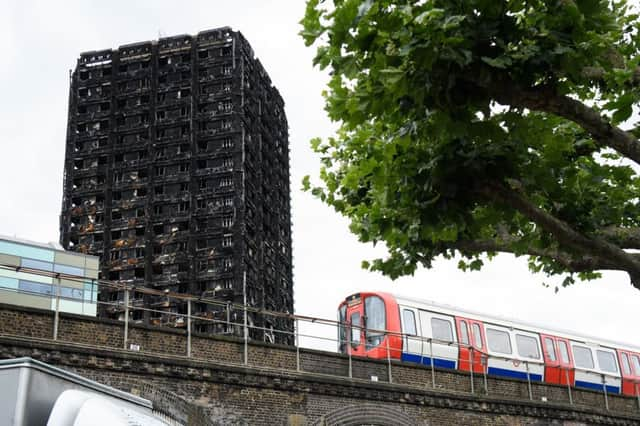Cladding '˜used on Grenfell Tower' found on 44 Scottish schools


Checks are currently being carried out by local authorities to ensure that the type of aluminium composite material (ACM), which can be used appropriately, has been fitted in accordance with building regulations in all these cases.
Fourteen local authorities have confirmed ACM has been used in cladding systems on low-rise schools, amounting to 1.7% of the school estate.
Advertisement
Hide AdAdvertisement
Hide AdSixteen of them are in Dumfries and Galloway, where further inspections are still being carried out, while six are in East Renfrewshire and six in West Dunbartonshire.
Three schools in South Ayrshire, three in Inverclyde and two in Angus are affected.
Aberdeen, Argyll & Bute, Edinburgh, Dundee, Glasgow, North Lanarkshire, Shetland and South Lanarkshire have one school each affected, while Scottish Borders Council has still to respond.
A Scottish Government spokesman said: “Local authorities are responsible for ensuring the safety of school buildings in their areas - and if there is a need to inform parents and pupils on any aspect of school safety it is for the council to do so.
“Schools across Scotland are currently closed for summer holidays and all checks being carried out are precautionary to ensure building materials have been correctly used.”
The Scottish Government reiterated that building standards systems and regulations for high-rise domestic properties in Scotland mean the type of product used on Grenfell Tower should not be used in their cladding systems.
However, in some controlled circumstances specified by Scottish building regulations, ACM can be used as part of the cladding systems of other buildings.
Scotland’s building regulations specify that those cladding systems must meet the relevant technical requirements applicable in each case
Advertisement
Hide AdAdvertisement
Hide AdNo Scottish local authority-owned school buildings above 18 metres have ACM cladding.
The Scottish Government’s Ministerial Working Group, convened to examine building and fire safety regulatory frameworks, held its third meeting on Thursday.
This group is overseeing a review of building and fire safety regulatory frameworks in Scotland with an initial focus on high rise domestic buildings, following the Grenfell Tower fire in London on June 14, in which at least 80 people are believed to have died.
The meeting heard that no high-rise domestic buildings owned by councils or housing associations in Scotland have used ACM cladding.
Thirty of 32 local authorities have reported that ACM cladding has not been used on any privately owned high-rise domestic buildings.
Edinburgh and Glasgow are completing their investigations and it was acknowledged this will take time due to the numbers involved.
All Scottish health boards have confirmed that none of their buildings use the cladding type reported to have been used on Grenfell Tower.
However, additional checks have shown that eight sites on the NHS estate - including Queen Elizabeth University Hospital in Glasgow - have used solid aluminium with A1 non-combustible fire rating material and mineral wool insulation.
Advertisement
Hide AdAdvertisement
Hide AdGreater Glasgow and Clyde Health Board has been assured by Multiplex, the main contractor for the hospital construction, that the insulation material used in Queen Elizabeth University Hospital (QEUH) - Kingspan Kooltherm K15 Insulation Boards - were properly installed to meet building and fire safety regulations.
Donald Gillies, South Ayrshire Council’s head of property and risk, said: “These findings are not surprising given how extensively ACM - which comes in many forms - is used in the construction industry and we continue to have confidence in the safety of our school estate.
“To provide complete reassurance, we are continuing with further checks of our school estate over the summer months; however we do not expect these to highlight any issues.”